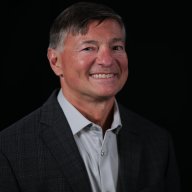
Target plots supply chain expansion
Retailing giant Target said that it will balance growth and profit through continual improvement, efficiency gains and funding growth initiatives.
Target's approach to creating a durable business model was outlined on the retailer's fourth quarter earnings conference call. The talk covered a few key areas:
Harvesting efficiency gains and reinvesting.
Supply chain expansion plans after maximizing value in its current distribution center footprint.
And how Target is revamping processes in multiple customer touch points.
Retailers have been talking continual process improvements on the latest round of conference calls. The retailing industry is navigating multiple challenges including inflation and supply chain disruptions.
Target has become a retail success story as it transformed its stores into distribution centers and leveraged prescient pre-COVID-19 pandemic acquisitions such as Shipt.
Michael Fiddelke, Chief Financial Officer at Target, said:
Our plans account for the inherent trade-off between profit rates and top line growth. Put another way, a durable business model anticipates the need for continual investments to deliver sustainable growth. As such, we've built an algorithm based on driving and harvesting continued efficiencies in our business and continually reinvesting those savings in growth that further differentiates Target through our team, our stores and the entire guest experience.
When it comes to supply chain, Target Chief Operating Officer John Milligan said the company will be expanding its footprint.
Our investments in capacity start upstream and how we innovate within our supply chain to deliver on the growing need for inventory in our stores. Before last year, we hadn't added a new regional distribution center in over a decade, even as our total sales grew 40% over that same time period. Rather than add buildings, we grew by investing in automation, robotics and process design to improve the efficiency of our existing sites. Of course, we'll always keep investing to make our buildings more efficient. But with an additional $27 billion in sales over the last 2 years, we can't rely on that alone. It's time to expand our network.
Milligan added that Target will be investing to accelerate its last-mile delivery.
On the customer experience, Mark Schindele, Chief Stores Officer at Target, said the goal is to make the experience "fast, convenient and rewarding." He added that the returns process is being revamped. "Our teams are building the capability to accept returns from the drive-up lane with plans to test later this year. So, guests will be able to check everything out their shopping list and return a product that wasn't quite right at the same time and without leaving the car," said Schindele.
Target is also in a test-and-learn phase for Starbucks drive-up orders too.
Also see: Why Process Mining Is the Top Skill To Learn in 2022 | What is Process Mining? | Process mining hits inflection point in 2022 as decision makers eye better execution Schindele said omnichannel transformation needs contributions from IT as well as supply chain and other partners as well as staffing applications. "We're enhancing our technology to give store leaders an even clear real-time picture of fulfillment needs and testing out new tools to help them better predict guest patterns in the future, helping us be even more efficient in staffing, the right teams at the right times, ready to do the work and deliver for our guests," said Schindele.


